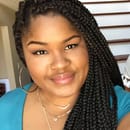There are currently 34 girls of color missing in DC, and no news outlet is choosing to release their names or discuss their possible whereabouts.
So we will.
The hashtag, #FindOurGirls popped up in numbers on Friday March 24, 2017 as 34 names were released. These names however, hold so much substance. These young girls have suddenly disappeared between February and March with no answer as to where they could possibly have gone. This is already alarming considering the state of our country and where they have decided to place their top priorities. But the biggest question here is, where is the media coverage?
Noticeably, there have been no amber alerts, no news conferences and certainly no alarm on an officials part to show the efforts to find these girls. So now there are other questions that follow like why do girls of color go unnoticed if they are not being “disruptive”? Or how many times do black and brown girls have to disappear before this garners enough attention to be considered worrisome? One is the answer in latter, but 34 is overwhelming in knowing that there is not appropriate effort being given to bring these girls home to their families.
Sickening, sad, confused and suspicious are only a few of the adjectives coming from the hearts of black and brown women alike as a flood of posts of faces fills our timelines. This is personal and it is apparent that the wholeness of missing girls of color is not one that holds validity in the culture of D.C. This is not just a simple case of the 48-hour rule, this is the case of blatant importance of lives that could possibly change the world. Moreover, black and brown girlhood is one that must be protected at every cost especially when 34 of them are inexplicably held in silence.
In a similar fashion, Relisha Rudd disappeared in March of 2014 (3 years this month) with little to no clues as to where she may have gone. Aside from her being “cared for” by a 51-year old male janitor at the discretion of her mother her story still hangs in the balance. Her sudden disappearance came when the “charming” Khalil Tatum would often take her and bring her back to her family, until one day he did not. The most saddening moment about this case is that major efforts to find Relisha ceased after April 2016 but the means of protecting her failed long before then. Now a year later, Relisha and countless others are more names to be added to a list of those who mysteriously disappeared.
Over the course of 5 years, there have been endless social movements in the efforts to recover justice for our missing and murdered black bodies. In 2012, Black Lives Matter finally went mainstream as Trayvon Martin was murdered near his home, and in the summer of 2014 Eric Garner was shown having his airways cutoff by overzealous officers which formed the I Can’t Breathe hashtag. Concerning black women, Sandra Bland was mysteriously found dead in her jail cell as she was pulled over for not turning on her traffic signal which gave us Say Her Name. Of course there are more but the reasons, movements and countless names that can go on for days. However, discussing the first two movements above black women often go unheard in these conversations. Why is that? Why are the cornerstone of many of these movements silenced and most of all what can we do to make sure the black and brown girls are held to the same protection in our communities as we do black and brown men?
We cannot continue to have these conversations about black lives without acknowledging the girls and women who are kidnapped, entered into sex trafficking rings, raped, prostituted, abused, violated and murdered everyday. There are currently 64,000 plus black women missing to date and no one is talking about them enough. There are currently teenage girls with similar descriptions and ages in D.C. missing, and specialized searches parties from their local government are not talking about them. There are young girls currently being stolen and sold into the world of sex trafficking and no one is talking about them. How would you feel if this were you?
There has to be a point where black and brown girls are valued enough to have a search party formed for them or to have a news report released as breaking news. There has to come a time when there has to be enough created in a space for black and brown girls to be cared for in the first place. Until then, we will love ourselves and our little sisters who go unheard and continue to work in knowing that we are the ones who must create that space, because no one else will.
This space comes with knowing that yes, you attended a the Woman’s Day March, but everyone there was not in solidarity of every type of woman. This space comes with knowing that you will have to define your womanhood as infinite black and browness because the issues and stigma that you deal with are different that those of a white woman’s. Creating this space comes with knowing that there will be 34 missing girls of color and you and every like-minded woman will form your own search party dissecting every avenue of what happened (even though due to politics, there is 24-hour surveillance in D.C).
Do not sit idle as this heartbreaking news unfolds, but instead aid in finding out more of what you can do to bring our girls home. For every ounce of your femininity, know that the smallest effort is the biggest fight. These girls are all individuals who could change the world, and it often begins with you changing yours. Do what you can and use the hashtags #FindOurGirls #BringBackOurGirls #SayHerName to insure that these girls are heard.



